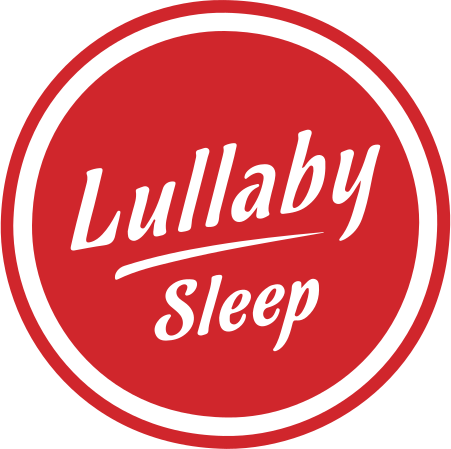It’s rare, but it does happen.
By Patia Braithwaite from Self.com
For a lot of us, the things that mess with our sleep are pretty standard. Having sex while sleeping doesn’t usually qualify. Instead, you might deal with flashing lights sneaking through closed curtains or cats that refuse to accept the fact that breakfast never has and never will be served at 4:15 A.M. But for those with sexsomnia, a condition where people carry out sexual behaviors while they snooze (think: intercourse, masturbation, groping, and more), these interruptions can be way more X-rated. Yes, this is a real thing. And even though the thought of it might elicit some giggles, for people with sexsomnia, this health issue is a major concern for multiple reasons—especially because it can lead to feeling violated or violating someone else.
There are no hard and fast numbers for how many people have sexsomnia. It’s tough to pinpoint the prevalence because people don’t often speak up about it. They won’t typically come into sleep clinics seeking help for sexsomnia, for example, Guy Leschziner, M.A., Ph.D., consultant neurologist at London Bridge Hospital and author of The Nocturnal Brain, tells SELF. “But actually, if you ask people in a sleep clinic systematically, ‘Have you ever exhibited sexual behavior in your sleep?’ people report it much more frequently … it’s probably not as rare as we think it is,” he says.
While there is a lot that we don’t know about sexsomnia, we’ve asked sleep experts to explain why they think it happens, what might cause people to have sex while sleeping, and what you can do if you think you might be exhibiting symptoms.
Sexsomnia seems to happen when the brain is partly asleep and partly awake.
Your sleep cycle can be broken down into distinct stages. There’s REM sleep, or rapid eye movement sleep, which is when you dream. Then there is NREM (non-rapid eye movement) sleep, which accounts for about 75 percent of our non-waking hours, according to the National Sleep Foundation.
NREM sleep can be further broken down into three stages. During the first two stages, N1 and N2, you’re essentially falling asleep (your breathing and heart rate are regular, but you become disengaged from your surroundings, and your body temperature drops a bit). N3, the last stage of NREM sleep, is known as slow-wave sleep because of how your brain waves change at this time. It’s usually the deepest, most restorative phase of sleep.
People can experience parasomnias (sleep disorders that involve strange behavior) during either REM or NREM sleep. With the former, you’re totally knocked out and dreaming, but the parts of your brain that would normally stop you from moving to act out your dreams malfunction in some way. Sleep paralysis is an example of a REM parasomnia. NREM parasomnias, however, happen when some of your brain is asleep while some of your brain is awake, Leschziner says, usually during slow-wave sleep. Examples include sleep-talking, sleepwalking, and, as it happens, sexsomnia.
Many NREM parasomnias like sexsomnia feature behaviors called automatisms, Jesse Mindel M.D. a neurologist and sleep medicine specialist at the Ohio State University Wexner Medical Center, tells SELF. Automatisms can occur without complex reasoning and coordination. “A sleepwalker will just wander around and open a door [or] sit down, but they don’t do complicated tasks,” Dr. Mindel says. Sexual behaviors like thrusting, masturbation, and even intercourse fall under this type of activity. It’s also worth mentioning that, in most cases, people who deal with NREM parasomnias don’t remember their actions when they wake up, Dr. Mindel explains.
Researchers don’t know exactly what causes sexsomnia.
There are, however, theories about potential causes. According to the International Society for Sexual Medicine (ISSM), people who have sexsomnia often have other sleep issues, too. In a 2016 literature review and study published in Current Opinion in Pulmonary Medicine, researchers found that 73 percent of 41 patients diagnosed with sexsomnia between 2008 and 2014 at Guy’s and St Thomas’ Sleep Disorders Centre in the U.K. had a history of other parasomnias, like sleepwalking or confusional arousals (when upon waking, people act strangely or carry out strange activities—like sex).
As the review points out, there also seems to be a connection between sexsomnia and sleep apnea, a disorder that happens when a person repeatedly stops and starts breathing for short periods of time while sleeping. As the review explains, sleep apnea tends to wake the brain up during slow-wave sleep. These tiny sleep interruptions create the perfect environment for confusional arousals.
There’s also the matter of sleep deprivation. When you aren’t getting enough sleep or your sleep is too fragmented, it’s more difficult for you to transition through your sleep-wake cycles effectively. This lack of quality sleep can contribute to NREM parasomnias like sexsomnia, according to 2018 research published in the Journal of the Missouri State Medical Association.
Alcohol consumption may also trigger sexsomnia episodes in people with slow-wave sleep disorders. In a 2017 survey published in the Journal of Clinical Sleep Medicine that examined 126 sleep clinic patients, researchers found that 91.7 percent of the respondents who reported drinking regularly said alcohol made their parasomnias happen more frequently. While alcohol as a trigger is a controversial topic among sleep disorder experts, the researchers posit that alcohol tends to increase a person’s amount of slow-wave sleep and number of arousals (those instances of waking up but not being totally there cognitively). Additionally, research suggests that medications like selective serotonin reuptake inhibitors (SSRIs), which regulate the amount of serotonin in the brain, might also be contributing factors. SSRIs inhibit REM sleep and might bring about sleep fragmentation.
Finally, parasomnias tend to run in families, Leschziner says, so people with sleep issues like sexsomnia are sometimes predisposed to them genetically.
Most people realize they have sexsomnia when a bed partner complains.
Since people who have NREM sleep disorders don’t usually remember their episodes, they typically realize they have parasomnias through certain tell-tale signs, Dr. Mindel says. For instance, he explains, people who eat in their sleep might notice weight gain or mysterious messes. Sleepwalkers might figure out they’re sleepwalking because other people see it or they get injured. When it comes to sexsomnia, most people only discover that they have it because someone they share a bed with points it out, Dr. Mindel explains.
This brings us to our major point about sexsomnia: Even though it can sound like a joke, it can actually be a serious concern. Consider, for instance, that participating in sexual activity while you’re not fully awake leaves you vulnerable to injury. Additionally, people who have sexsomnia episodes might feel guilty, ashamed, or depressed as a result, the National Sleep Foundation says. And, on a tremendously important note, if you’re asleep, you can’t give or get enthusiastic consent in the event that someone else is involved in your sexsomnia. There have been reports of sexual assault that have implicated sexsomnia as a cause.
“There’s the medical side [to this condition], but there’s also a serious legal side to this,” Dr. Mindel says.
Sexsomnia is often treatable.
“These things don’t start for no reason,” Dr. Mindel says. “You just have to figure out what that is and fix it.”
That’s easier said than done, but the point is that if you think you have sexsomnia, it’s very much worth reaching out for help. You can start by talking to your primary care doctor if you don’t already have a sleep specialist—they may be able to recommend one. In any case, your doctor can do a full workup to address any sexsomnia triggers (like sleep deprivation), underlying conditions, medications, or lifestyle factors that might contribute to these episodes, Dr. Mindel explains. It might also help to talk to your doctor about medication like clonazepam, which can calm your central nervous system and reduce how much time you spend in the phase of sleep during which NREM disorders most often happen.
You might also take measures to change your overall sleep hygiene. This includes limiting your alcohol consumption and making sure that you’re on a consistent sleep-wake schedule, the ISSM says. The ISSM also suggests adopting a relaxing evening ritual, like taking a warm bath or reading. All of these actions are recommended to improve your overall sleep quality, which could help limit the disturbances that often contribute to interrupted sleep, according to the National Sleep Foundation.
While working to address underlying factors (and even after you’ve addressed them), Dr. Mindel says it’s imperative that you limit your bed-sharing to people who are aware and accepting of the situation. If the whole reason you realized you had sexsomnia was that your partner alerted you to it, receiving a diagnosis means you can have a more knowledgeable and detailed conversation about how to handle your condition. Additionally, any sleeping partners might want to sleep in a separate bedroom (with locked doors if necessary, since people with sexsomnia can be more likely to sleepwalk) to avoid instances of unwanted contact or assault.
While sexsomnia might sound pretty scary, it’s important to remember that it’s often manageable with the right course of treatment. There’s no shame in seeking help if you need it.

